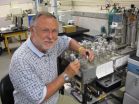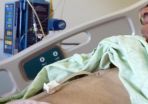(Press-News.org) If your parents have a history of high blood pressure, you can significantly reduce your risk of developing the disease with moderate exercise and increased cardiovascular fitness, according to new research in the American Heart Association's journal Hypertension.
In a study of more than 6,000 people, those who had a parent with high blood pressure but were highly fit had a 34 percent lower risk of developing high blood pressure themselves, compared to those with a low-fitness level who had the same parental history.
"Understanding the roles that family history and fitness play in chronic diseases is critically important," said Robin P. Shook, M.S., study lead author and a doctoral graduate student in the Arnold School of Public Health at the University of South Carolina in Columbia. "The results of this study send a very practical message, which is that even a very realistic, moderate amount of exercise — which we define as brisk walking for 150 minutes per week — can provide a huge health benefit, particularly to people predisposed to hypertension because of their family history."
Previous research indicates that parental history accounts for about 35 percent to 65 percent of the variability in blood pressure among offspring, with varying levels of risk based on which parent developed it and the age of onset.
Researchers followed a group of 6,278 predominantly Caucasian adults 20- to 80-years-old for an average 4.7 years. The participants were patients of the Cooper Clinic, a non-profit organization dedicated to preventive medicine, research and education in Dallas. Thirty-three percent of participants reported that a parent had hypertension.
When the study began, all participants were healthy, reported no physician diagnosis of hypertension, and achieved an exercise test score of at least 85 percent of their age-predicted maximal heart rate. Researchers determined participants' cardiorespiratory fitness using a maximal treadmill exercise test.
During the study, 1,545 participants reported they had developed hypertension.
Researchers found that:
Combining those with and without a family history of high blood pressure, high levels of fitness were associated with a 42 percent lower risk of developing hypertension, and moderate levels of fitness with a 26 percent lower risk.
People with both a low level of fitness and a parent with hypertension had a 70 percent higher risk for developing hypertension compared with highly fit people with no parental history.
Those with a high level of fitness and a parent with hypertension experienced only a 16 percent higher risk of developing hypertension compared to those who were fit and had no parental history.
"The correlation between fitness levels, parental history and risk are impossible to ignore," Shook said. "This awareness can serve the clinician and the patient, as they work together to find effective and reasonable ways to avoid the diseases that have affected their family members — in some cases, for generations."
The research findings may not apply to all people because the majority of the study participants were relatively fit, well-educated, middle to upper class white men.
The findings support the American Heart Association's recommendations of moderately intense physical activity, such as brisk walking, for 30 minutes or longer at least five days a week.
INFORMATION:
Co-authors are Duck-chul Lee, Ph.D.; Xumei Sui, M.D., M.P.H.; Vivek Prasad, M.B.B.S.; Steven P. Hooker, Ph.D.; Timothy S. Church, M.D., M.P.H., Ph.D. and Steven N. Blair, P.E.D. Author disclosures are on the manuscript.
The National Institutes of Health and an unrestricted research grant from The Coca-Cola Company funded the study.
Learn more about your risks for high blood pressure and how to be physically fit.
Statements and conclusions of study authors published in American Heart Association scientific journals are solely those of the study authors and do not necessarily reflect the association's policy or position. The association makes no representation or guarantee as to their accuracy or reliability. The association receives funding primarily from individuals; foundations and corporations (including pharmaceutical, device manufacturers and other companies) also make donations and fund specific association programs and events. The association has strict policies to prevent these relationships from influencing the science content. Revenues from pharmaceutical and device corporations are available at www.heart.org/corporatefunding.
NR12– 1077 (Hypertension/Shook)
END
STANFORD, Calif. — What goes bump in the night? In many U.S. households: people. That's according to new Stanford University School of Medicine research, which found that about 3.6 percent of U.S. adults - or upward of 8.4 million - are prone to sleepwalking. The work also showed an association between nocturnal wanderings and certain psychiatric disorders, such as depression and anxiety.
The study, the researchers noted, "underscores the fact that sleepwalking is much more prevalent in adults than previously appreciated."
Maurice Ohayon, MD, DSc, PhD, professor of ...
INDIANAPOLIS -- Current colorectal cancer screening guidelines for individuals with first-degree relatives with precancerous colon polyps are based on studies that were not properly designed or were too limited to shape those guidelines, according to a new systemic review of research on the topic. The review authors call for new studies to measure the risk and identify the factors that modify it.
"We found that most studies that are cited for the risk for colorectal cancer when first-degree relatives -- parents, siblings or children -- have a precancerous polyp do not ...
SALT LAKE CITY, May 14, 2012 – If the world's nations ever sign a treaty to limit emissions of climate-warming carbon dioxide gas, there may be a way to help verify compliance: a new method developed by scientists from the University of Utah and Harvard.
Using measurements from only three carbon-dioxide (CO2) monitoring stations in the Salt Lake Valley, the method could reliably detect changes in CO2 emissions of 15 percent or more, the researchers report in the online edition of the Proceedings of the National Academy of Sciences for the week of May 14, 2012.
The method ...
Despite an unprecedented rate of economic growth, Chinese people are less happy overall than they were two decades ago, reveals timely new research from economist Richard Easterlin, one of the founders of the field of "happiness economics" and namesake of the Easterlin Paradox.
In 1990, at the beginning of China's economic transformation, a large majority of Chinese people across age, education, income levels, and regions reported high levels of life satisfaction. Sixty-eight percent of those in the wealthiest income bracket and 65 percent of those in the poorest income ...
Anthropologists working in southern France have determined that a 1.5 metric ton block of engraved limestone constitutes the earliest evidence of wall art. Their research, reported in the most recent edition of the Proceedings of the National Academy of Sciences, shows the piece to be approximately 37,000 years old and offers rich evidence of the role art played in the daily lives of Early Aurignacian humans.
The research team, comprised of more than a dozen scientists from American and European universities and research institutions, has been excavating at the site ...
PROVIDENCE, R.I. [Brown University] — A new study led by Brown University researchers reports that percutaneous endoscopic gastric (PEG) feeding tubes, long assumed to help bedridden dementia patients stave off or overcome pressure ulcers, may instead make the horrible sores more likely to develop or not improve.
The analysis of thousands of nursing home patients with advanced dementia appears in the May 14 edition of the Archives of Internal Medicine.
"This study provides new information about the risks of feeding tube insertion in people with advanced cognitive impairment," ...
What is the connection, if any, between sudden cardiac death and people with HIV/AIDS? And can that knowledge help prolong their lives?
In a comprehensive, 10-year UCSF study, researchers found patients with HIV/AIDS suffered sudden cardiac death at a rate four times higher than the general population.
"As part of my ongoing research in 2010, we were looking at every instance of sudden death in San Francisco," said first author Zian H. Tseng, MD, an electrophysiologist and an associate professor of medicine in the UCSF Division of Cardiology. "I noticed that many of ...
A new study describes a compound that selectively kills cancer cells by restoring the structure and function of one of the most commonly mutated proteins in human cancer, the "tumor suppressor" p53. The research, published by Cell Press in the May 15th issue of the journal Cancer Cell, uses a novel, computer based strategy to identify potential anti-cancer drugs, including one that targets the third most common p53 mutation in human cancer, p53-R175H. The number of new cancer patients harboring this mutation in the United States who would potentially benefit from this ...
Asymptomatic patients who undergo treadmill exercise echocardiography (ExE) after coronary revascularization may be identified as being at high risk but those patients do not appear to have more favorable outcomes with repeated revascularization, according to a report published Online First by Archives of Internal Medicine, a JAMA Network publication. The article is part of the journal's Less is More series.
Cardiac events and recurrent ischemia (a temporary shortage of oxygen caused by impaired blood flow; identified in the study as new or worsening cardiac wall motion ...
According to a small clinical trial reported by investigators from Japan, acupuncture appears to be associated with improvement of dyspnea (labored breathing) on exertion, in patients with chronic obstructive pulmonary disease (COPD), according to a study published Online First by Archives of Internal Medicine, a JAMA Network publication.
The management of dyspnea is an important target in the treatment of COPD, a common respiratory disease characterized by irreversible airflow limitation. COPD is predicted to be the third leading cause of death worldwide by 2020, according ...



